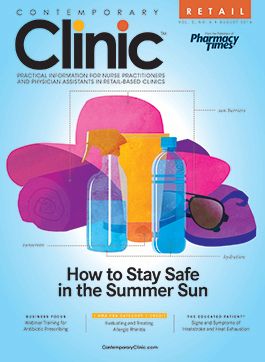Assessment and Treatment of Acne in the Retail Clinic Setting
Acne is a common, chronic skin disorder involving inflammation and/or blockage of the sebaceous follicles.
Acne is a common, chronic skin disorder involving inflammation and/or blockage of the sebaceous follicles. The major pathogenic factors involved include follicular hyperproliferation and keratinization with abnormal desquamation, increased sebum production due to androgenic stimulation, and microbial colonization of pilosebaceous units by
Propionibacterium acnes
, which results in inflammation. Clinical features include a range of lesions, such as open and closed comedones, inflammatory papules, pustules, nodules, and cysts
. Presentations of acne can range from a mild comedonal form to severe inflammatory cystic acne of the face, chest, and back.
1-3
Acne Facts
An estimated 50 million individuals in the United States are affected by acne, and the cost of treating acne is more than $3 billion per year.
The disorder has an 85% prevalence rate among those 12 to 24 years old, with peak prevalence occurring during adolescence. Recent studies also cite the increasing prevalence of adult acne, particularly in women.
The physical effects of acne include the potential for disfigurement, scarring, and permanent discoloration. Psychological effects can be significant and include the potential for psychological scarring due to emotional trauma, poor self-esteem, depression, and anxiety.
45,67—9
Acne Risk Factors
Evidence supports the presence of several risk factors in the development of acne. Common risk factors include the following:
- Use of certain medications, such as corticosteroids, bromides, lithium, certain anti-epileptics, and iodide-containing drugs
- Family history of acne (80% heritability in first-degree relatives)
- Hormonal changes, such as those experienced during the menstrual cycle or pregnancy
- Certain conditions such as polycystic ovary syndrome, Cushing’s syndrome, and congenital adrenal hyperplasia
- Stress
- Smoking
- Occlusion of the skin surface with greasy products, clothing, or sweat
Some evidence exists for high glycemic foods and possibly dairy intake as risk factors for acne.
10
Opinion to no evidence exists for chocolate intake as a risk factor.
3,4,11
Acne Assessment
Subjective assessment of the patient with acne should include the following:
- Patient medical history, medication history, and family history
- Hobbies
- Duration, distribution, and severity of lesions
- Presence of risk factors
- Skin care routine and products used
- Therapies tried and response to treatment
- Psychological and social impact of disorder10
Objective assessment should include clinical assessment of acne severity. Categorization of acne severity, based on clinical presentation, is presented in
.
Table 110
TABLE 1:ASSESSMENT OF ACNE SEVERITY10
Mild
- Predominantly noninflammatory comedonal lesions, occasional small papules:
- Closed micro-comedones 1-3mm, flesh-colored, possible white plug
- Open comedones with black-colored central plugs
- - Typically limited to facial involvement
Moderate
- Mainly inflammatory lesions involving reddened or hyperpigmented papules and pustules
- Pustules with pointed yellow-green colored tops that become fluctuant and rupture spontaneously
- Involves face and trunk
Severe
- Severe papular and pustular inflammatory lesions
- Nodular-cystic lesions, appear bright to dark red, sinus tracking
- Hyperpigmentation present
- Scarring: atrophic pits to large depressed scars, keloids
Acne Treatment Goals
Principles of acne treatment include the control of noninflammatory and inflammatory processes, prevention or minimizing of scarring and permanent pigmentation changes, and elimination or reduction of modifiable acne-causing factors. Long-term treatment is often necessary. It is essential that interventions to support therapeutic adherence be included in each patient’s treatment plan, such as engaging the patient in shared decision making. Lastly, treatment of patients with acne should support optimal psychosocial health and well-being.
1,10
Acne Therapies
Treatment options include OTC medications, prescription creams and ointments, and antibiotics. Common pharmacologic therapies for the treatment of acne are highlighted in
.
Table 22,3,9,10,12-14
TABLE 2:ACNE PHARMACOLOGIC THERAPIES2,3,9,10,12-14
Topical Retinoids
- Comedolytic agent that loosens the cohesive cells of the follicular epithelium, stimulates mitosis, and promotes normal keratinization
- Considered first-line treatment with benzoyl peroxide
- Mainstay of acne maintenance therapy
- Pustular flare at the initiation of therapy is common
- Avoid in pregnancy, keep out of sunlight, and separate dosing from benzoyl peroxide use by 1 hour
- Adverse effects include skin irritation and photosensitization
Benzoyl Peroxide
- Nonantibiotic antimicrobial; decreases growth ofP acnesby 95%
- Comedolytic and anti-inflammatory properties
- Synergistic when used in combination with topical retinoids and/or topical antibiotics
- Adverse effects include irritation, scaling, potential bleaching of clothing and hair
Azelaic Acid
- Dicarboxylic acid with antibacterial, antikeratinizing, and anti-inflammatory properties
- Inhibits proliferation ofP acnes(less effective than benzoyl peroxide)
- Considered second-line treatment to retinoids and benzoyl peroxide
- Mild skin lightening effects helpful with postinflammatory hyperpigmentation
Single Topical Antibiotics
- Control inflammatory process and suppress growth ofP acnes
- Recommended for mild to moderate inflammatory lesions
- Use in combination with benzoyl peroxide or retinoid to reduce resistance
- Do not combine with oral antibiotic therapy
- Courses limited to 12 weeks because of growing resistance
- Avoid as mono- or maintenance therapy
Fixed-Dose Combination Products
- Can improve treatment outcomes and patient adherence by simplifying daily regimens
- Benzoyl peroxide combination products reduce risk of antibiotic resistance
- Individual generic components are less expensive
Systemic Antibiotics
- Recommended for moderate to severe inflammatory acne
- Never use alone; always use in conjunction with a topical retinoid and/or benzoyl peroxide
- IncreasesP acnesresistance to erythromycin and tetracycline
- Doxycycline often considered first-line treatment
- Assess treatment response in 6-8 weeks; limit course to 12 weeks’ duration
Hormonal Therapies
- Useful adjunct for women with moderate to severe acne or in those with a combination of seborrhea, acne, hirsutism, and alopecia
- Combined oral contraceptive pills containing ethinylestradiol and a progesterone
- Include androgen-receptor blockers to suppress androgen actions
- Full benefit seen after 3-6 months
Isotretinoin
- Vitamin A derivative that is highly teratogenic;use requires 2 forms of birth control in women
- Indicated for nodulocystic or severe, recalcitrant acne
- Normalizes follicular keratinization, reduces sebum production, suppressesP acnes, and has anti-inflammatory properties
- Adverse effects include mucous membrane dryness, cheilitis, elevated liver function tests, and increased serum triglycerides
- Cannot be given with tetracycline (risk of pseudotumor cerebri)
- Requires management by dermatologic specialist
Treatment of Acne
The treatment of acne depends on the severity of acne as determined by clinical presentation.
presents an evidence-based approach to the treatment of acne according to classification of acne severity.
6Table 310,14,15
TABLE 3:TREATMENT OF ACNE10,14,15
Mild
Mild to Moderate
Moderate to Severe
Severe
Comedonal acne
Mild to moderate papulopustular acne
Moderate to severe papulopustular/moderate nodular acne (no pitting)
Severe nodular or conglobate acne
First-Line Option
First-Line Option
First-Line Option
First-Line Option
Topical retinoid
Topical retinoid
+
benzoyl peroxide (or benzoyl peroxide + topical clindamycin combination product)
Oral antimicrobial + topical retinoid
or
oral antimicrobial + azelaic acid
or
oral antimicrobial + topical retinoid + benzoyl peroxide
Referral to PCP or dermatologist
Second-Line Option
Second-Line Option
Second-Line Option
Alternative topical retinoid or azelaic acid
Alternate topical retinoid + alternate benzoyl peroxide or azelaic acid or oral antimicrobial
Consider endocrine evaluation and hormonal therapy if positive for signs of androgen excess
or
Referral to PCP or dermatologist
Maintenance
Maintenance
Topical retinoid
Topical retinoid +/- benzoyl peroxide
PCP= primary care provider
Acne Referral Guidelines
Health care providers in the retail clinic setting can greatly improve access to effective care and support optimal management in patients with acne
. However, certain clinical presentations involving severe cases of acne require referral to a primary care provider or dermatologist. In the following instances, it is most appropriate to refer patients presenting with acne to a higher level of care:
- A severe variant, such as fulminating acne with systemic symptoms
- Severe acne or painful, deep nodules or cysts that could benefit from isotretinoin therapy
- Evidence of severe social or psychological problems
- Risk for developing scarring, despite appropriate treatment modalities
- Moderate acne that has failed to respond to treatment that has included several courses of topical and systemic therapies
- Suspected underlying endocrinological cause that requires assessment1
Acne Patient Education
Comprehensive education in support of therapeutic adherence should be provided to all patients to help them manage their condition. Patient education should include setting realistic goals and expectations, how to use treatment therapies, awareness of potential adverse effects of medications, likely time scale for improvement, and duration of treatment.
Patients should be encouraged to use medications as directed and allow sufficient time for acne products to take effect. Washing the skin with a gentle cleanser twice daily is recommended. Patients should also be advised to avoid picking at acne lesions as this may cause permanent damage and scarring. Encourage the use of cosmetics and toiletries that do not clog pores and recommend the use of sunscreen with all acne medications.
Lastly, plan for follow-up assessment and care at 4- to 8-week time intervals.
15111
Conclusion
Acne affects the lives of millions of individuals in the United States each day.
The potential physical and psychological effects are significant and require an effective therapeutic plan. Topical retinoids and benzoyl peroxide are mainstay therapies in the effective treatment of most cases of acne. Patient education and regular follow-up care visits that support therapeutic adherence are essential to optimal patient outcomes. Cases that require referral include patients presenting with severe acne, deep nodules, or cysts that could benefit from isotretinoin therapy, as well as patients suspected of having an underlying endocrine disorder.
References
10
- Purdy S, de Berker D. Acne vulgaris.BMJ Clin Evid. 2011. pii: 1714.
- Ramanathan S, Hebert AA. Management of acne vulgaris.J Pediatr Health Care.2011;25(5):332-337.doi: 10.1016/j.pedhc.2011.05.007.
- Schalock PC, Sober AJ. Management of acne. In Goroll AH, Mulley AG,Primary Care Medicine,7th ed. Philadelphia, PA: Wolters Kluwer Health; 2014:1314-1317.
- Bhate K, Williams HC. Epidemiology of acne vulgaris.Brit Assoc of Derm.2013;168(3):474-485.doi: 10.1111/bjd.12149.
- Collier CN, Harper JC, Cafardi JA, et al. The prevalence of acne in adults 20 years and older.J Am Acad Dermatol.2008;58(1):56-59.
- Decker A, Graber EM. Over-the-counter acne treatments: a review.J Clin Aesthetic Dermatol.2012;5(5): 32-40.
- Barnes LE, Levender MM, Fleischer AB Jr, Feldman SR. Quality of life measures for acne patients.Dermatol Clin. 2012;30(2):293-300, ix. doi: 10.1016/j.det.2011.11.001.
- Bhambri S, Del Rosso JQ, Bhambri A. Pathogenesis of acne vulgaris: recent advances.J Drugs Dermatol.2009;8(7):615-618.
- Williams HC, Dellavalle RP, Garner S. Acne vulgaris. Lancet. 2011;379(9813):361-372. doi: 10.1016/S0140-6736(11)60321-8.
- Lavers I. Diagnosis and management of acne vulgaris.Nurse Prescribing.2014;12(7):330-336.
- Lee P, Elsaie M, Jacobs S. Allergic contact dermatitis in children: common allergens and treatment: a review.Curr Opin Peds.2009;21(4):491-498. doi: 10.1097/MOP.0b013e32832d2008
- Sabetta JR, Vishal PR, Vadasdi KB, et al. Efficacy of topical benzoyl peroxide on the reduction ofPropionibacterium acnesduring shoulder surgery.J Shoulder Elbow Surg.2015; 24(7): 995-1004.doi: 10.1016/j.jse.2015.04.003.
- Keri J, Shiman M. An update on the management of acne vulgaris.Clin Cosmet Investig Dermatol CCID.2009;2:105-110.
- Strauss JS, Krowchuk DP, Leyden JJ, et al; American Academy of Dermatology/American Academy of Dermatology Association. Guidelines for care of acne vulgaris management.J Am Acad Dermatol.2007;56(4):651-663.
- Lynde C, Tan J, Andriessen A, et al. A consensus on acne management focused on specific patient features.J Cutan Med Surg.2014;18(4):243-255.

